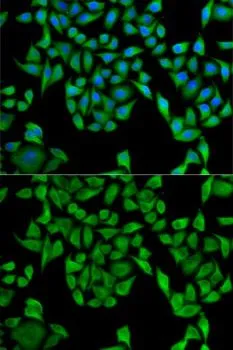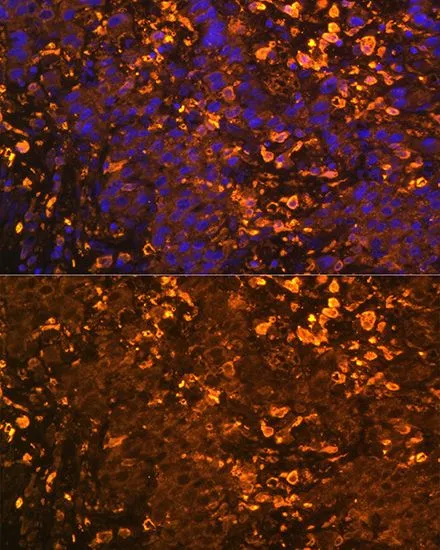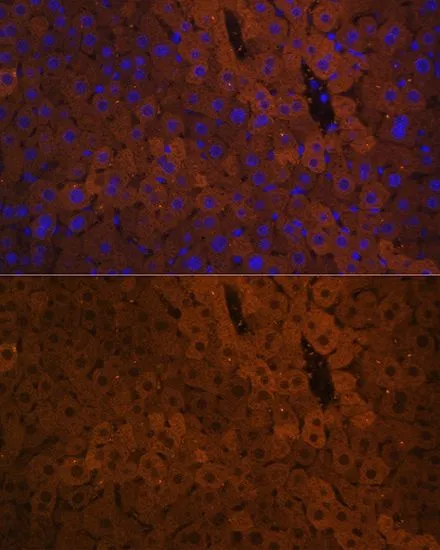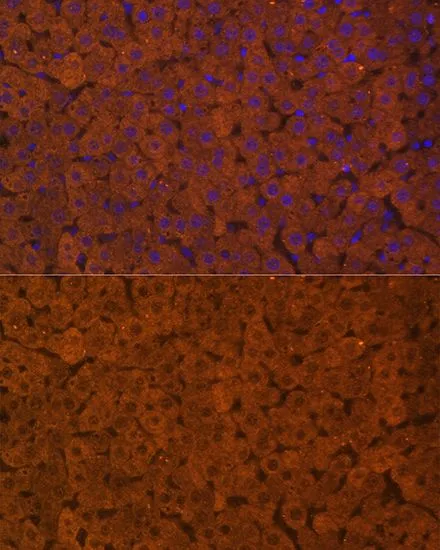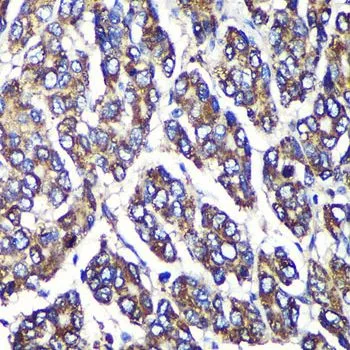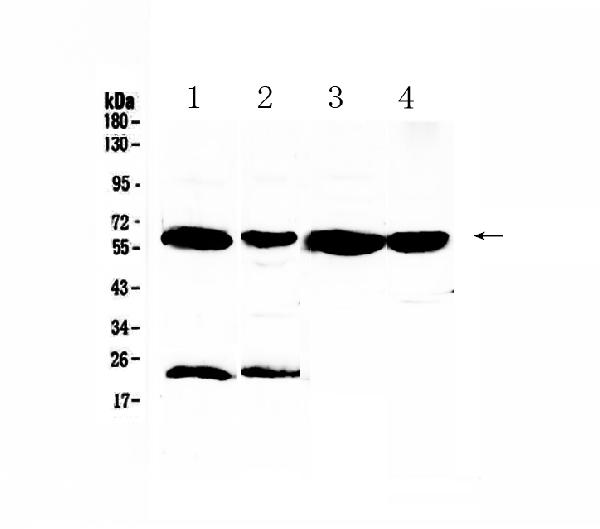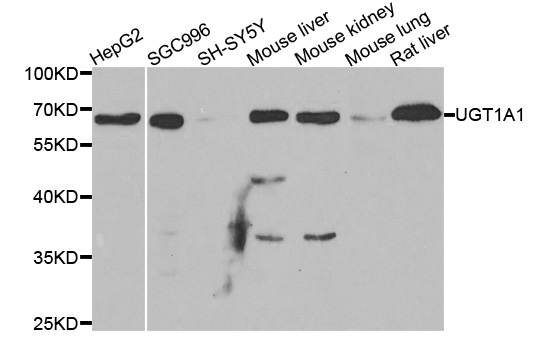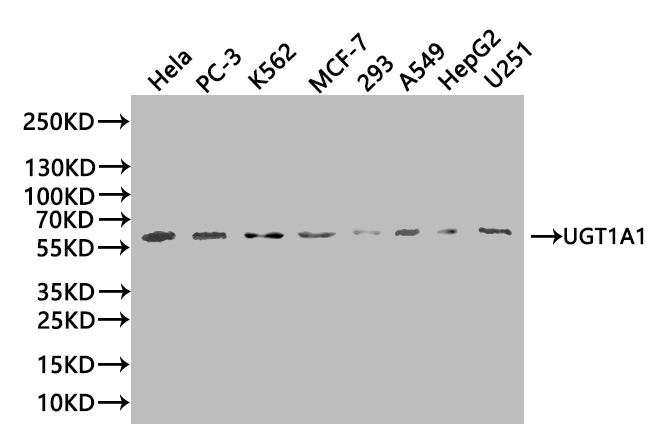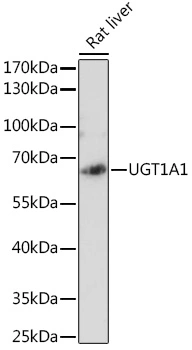
WB analysis of rat liver tissue lysate using GTX55835 UGT1A antibody. Dilution : 1:1000 Loading : 25microg per lane
UGT1A antibody
GTX55835
ApplicationsImmunoFluorescence, Western Blot, ImmunoCytoChemistry, ImmunoHistoChemistry, ImmunoHistoChemistry Paraffin
Product group Antibodies
TargetUGT1A1
Overview
- SupplierGeneTex
- Product NameUGT1A antibody
- Delivery Days Customer9
- Application Supplier NoteWB: 1:500 - 1:2000. ICC/IF: 1:50 - 1:200. IHC-P: 1:50 - 1:200. *Optimal dilutions/concentrations should be determined by the researcher.Not tested in other applications.
- ApplicationsImmunoFluorescence, Western Blot, ImmunoCytoChemistry, ImmunoHistoChemistry, ImmunoHistoChemistry Paraffin
- CertificationResearch Use Only
- ClonalityPolyclonal
- ConjugateUnconjugated
- Gene ID54658
- Target nameUGT1A1
- Target descriptionUDP glucuronosyltransferase family 1 member A1
- Target synonymsBILIQTL1, GNT1, HUG-BR1, UDPGT, UDPGT 1-1, UGT1, UGT1A, UDP-glucuronosyltransferase 1A1, UDP glucuronosyltransferase 1 family, polypeptide A1, UDP glycosyltransferase 1 family, polypeptide A1, UDP-glucuronosyltransferase 1-A, UDP-glucuronosyltransferase 1A, UGT-1A, UGT1*1, UGT1-01, UGT1.1, bilirubin UDP-glucuronosyltranserase, bilirubin UDP-glucuronosyltransferase 1-1, bilirubin UDP-glucuronosyltransferase isozyme 1, bilirubin-specific UDPGT isozyme 1
- HostRabbit
- IsotypeIgG
- Protein IDP22309
- Protein NameUDP-glucuronosyltransferase 1A1
- Scientific DescriptionThis gene encodes a UDP-glucuronosyltransferase, an enzyme of the glucuronidation pathway that transforms small lipophilic molecules, such as steroids, bilirubin, hormones, and drugs, into water-soluble, excretable metabolites. This gene is part of a complex locus that encodes several UDP-glucuronosyltransferases. The locus includes thirteen unique alternate first exons followed by four common exons. Four of the alternate first exons are considered pseudogenes. Each of the remaining nine 5 exons may be spliced to the four common exons, resulting in nine proteins with different N-termini and identical C-termini. Each first exon encodes the substrate binding site, and is regulated by its own promoter. The preferred substrate of this enzyme is bilirubin, although it also has moderate activity with simple phenols, flavones, and C18 steroids. Mutations in this gene result in Crigler-Najjar syndromes types I and II and in Gilbert syndrome. [provided by RefSeq, Jul 2008]
- Storage Instruction-20°C or -80°C,2°C to 8°C
- UNSPSC12352203

